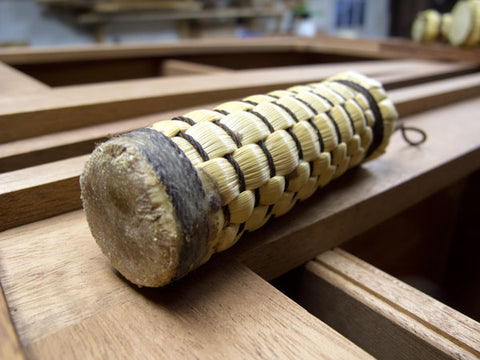The Polissoir
Sep 21 2017 0 Comments
Posted on September 22nd, 2017 by Gaston Monge-Grassi

This week we are writing about a french forgotten tool that is becoming more and more popular among woodworkers. For most modern woodworkers wax is not a finish. It goes on top of the finish and creates a barrier to scratches. But A.J. Roubo’s “L’Art du Menuisier,” states that wax was once a fast and beautiful finish for furniture.
The polissoir is quite easy to make and use. You can buy one from Don Williams website or you can make your own. All you need is broomcorn from an old or new broom, some twine and bees wax.

Virginia-based Don Williams has been finishing furniture for 40 years.The interesting thing is that Don's "new" method is it is actually quite old: By poring over famous ebeniste André Jacob Roubo's "L'Art du Menuisier," the seminal 18th-Century manual on cabinetmaking and carpentry, Williams learned of a tool Roubo used called a polissoir. Intrigued, Williams gleaned what he could from the scant images (example above) and descriptions, created his own and put it to the test:
Christopher Schwarz acquired a polissoir from Williams and ran his own experiments. He's had good luck shredding beeswax, melting it in a glue pot and laying it down with the polissoir, following Roubo's instructions:
"To make a beautiful polish, one should use wax of the best quality possible, and one should rub all the surface of the work just until there is sufficient wax everywhere.
"Then one spreads it with the straw bundle polisher, which, by its friction, heats up, thus pressing the wax into the pores of the wood in which it is being introduced.
"When the wax is well spread with the straw bundle polisher on the flat parts as well as the cavities, (which are done using the wood burnishers), one removes the excess wax with the wax scraper, which one passes over the work in order to remove it, which one then buffs/rubs next by spreading and removing with an ordinary cotton rag or of serge [woolen twill weave] which works better because, without being too rough, this has more bite than a regular cotton sheeting."

Cheers
Gaston
0 comments

Leave a Comment